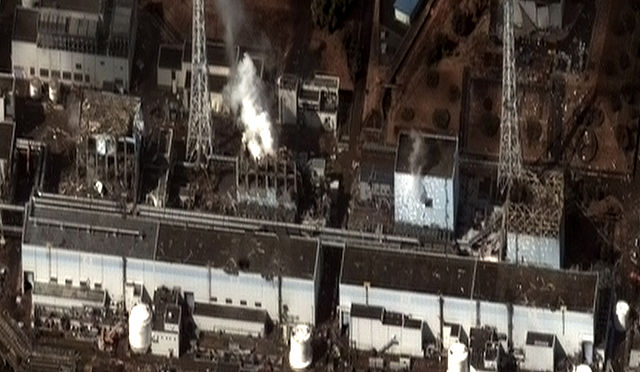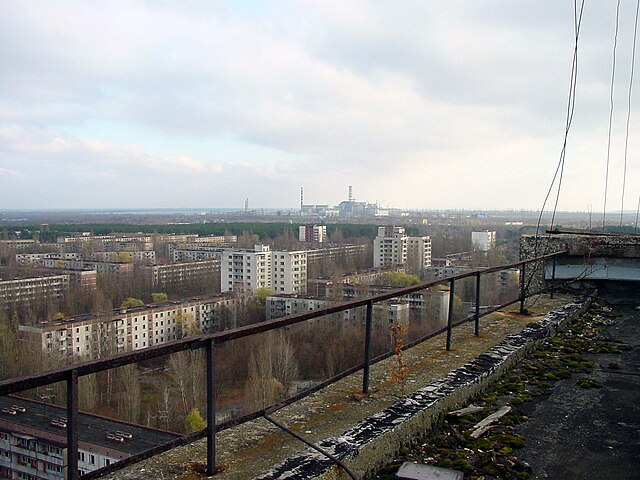Nuclear and radiation accidents
Wikimedia list article From Wikipedia, the free encyclopedia
Remove ads
The list of the worst disasters at nuclear power plants and other nuclear facilities all over the world is presented below:


One of the worst nuclear accidents to date was the Chernobyl disaster which occurred in 1986 in Ukraine. That accident killed 30 people directly, as well as damaging approximately $7 billion of property. A study published in 2005 estimates that there will eventually be up to 4,000 additional cancer deaths related to the accident among those exposed to significant radiation levels.[1] Radioactive fallout from the accident was concentrated in areas of Belarus, Ukraine and Russia. Approximately 350,000 people were forcibly resettled away from these areas soon after the accident.[1]
Some of the most serious nuclear and radiation accidents by death toll in the world have involved nuclear submarine mishaps. To-date, all of these were units of the former Soviet Union.[2][3][4][2]
Remove ads
Normal accidents
Normal Accidents is a 1984 book by Yale sociologist Charles Perrow, which provides a detailed analysis of complex systems from a social sciences perspective. It was the first to characterize complex technological systems such as nuclear power plants according to their riskiness. Perrow says that multiple and unexpected failures are built into society's complex and tightly-coupled systems. Such accidents cannot be designed around.[5]
The inspiration for Perrow's books was the 1979 Three Mile Island accident, where a nuclear accident resulted from an unanticipated interaction of multiple failures in a complex system. The event was an example of a normal accident because it was "unexpected, incomprehensible, uncontrollable and unavoidable".[6]
Perrow's argument rests on three principles. Firstly, people make mistakes, even at nuclear plants. Secondly, big accidents almost always escalate from very small beginnings. Thirdly, many failures are those of organizations more than technology. Each of these principles is still relevant today.[5]
Remove ads
Nuclear power
Remove ads
Nuclear submarines
Some of the most serious nuclear and radiation accidents by death toll in the world have involved nuclear submarine mishaps. To-date, all of these were units of the former Soviet Union.[2][3] Reactor accidents that resulted in core damage and release of radioactivity from nuclear-powered submarines include:[4][2]
- K-8, 1960, loss-of-coolant accident; substantial radioactivity released.[16]
- K-14, 1961, reactor compartment replaced due to unspecified "breakdown of reactor protection systems."
- K-19, 1961, loss-of-coolant accident resulting in 8 deaths and more than 30 other people being over-exposed to radiation.[17] The events on board the submarine are dramatized by the film K-19: The Widowmaker.
- K-11, 1965, both reactors damaged during refueling while lifting the reactor vessel heads; reactor compartments scuttled off the east coast of Novaya Zemlya in the Kara Sea in 1966.
- K-27, 1968, experienced reactor core damage to one of its reactors, resulting in 9 fatalities and 83 other injuries; scuttled in the Kara Sea in 1982.[18]
- K-140, 1968, reactor damaged following an uncontrolled, automatic increase in power during shipyard work.[19]
- K-429, 1970, an uncontrolled start up of the ship's reactor led to a fire and the release of radioactivity[19]
- K-116, 1970, loss-of-coolant accident in the port reactor; substantial radioactivity released.
- K-64, 1972, failure of the first Alfa-class liquid-metal cooled reactor; reactor compartment scrapped.
- K-222, 1980, Papa-class submarine had a reactor accident during maintenance in the shipyard while the ship's naval crew had left for lunch.[19]
- K-123, 1982, Alfa-class submarine reactor core damaged by liquid-metal coolant leak; the sub was forced out of commission for eight years.[19][20]
- K-431, 1985, a reactor accident while refueling resulted in 10 fatalities and 49 other people suffered radiation injuries.[3]
- K-219, 1986, suffered an explosion and fire in a missile tube, eventually leading to a reactor accident; a 20-year old enlisted seaman, Sergei Preminin, sacrificed his life to secure one of the onboard reactors. The submarine sank three days later.
- K-192, 1989, loss-of-coolant accident; reclassified from K-131.
Remove ads
Radiotherapy accidents
Remove ads
Related pages
References
Wikiwand - on
Seamless Wikipedia browsing. On steroids.
Remove ads
